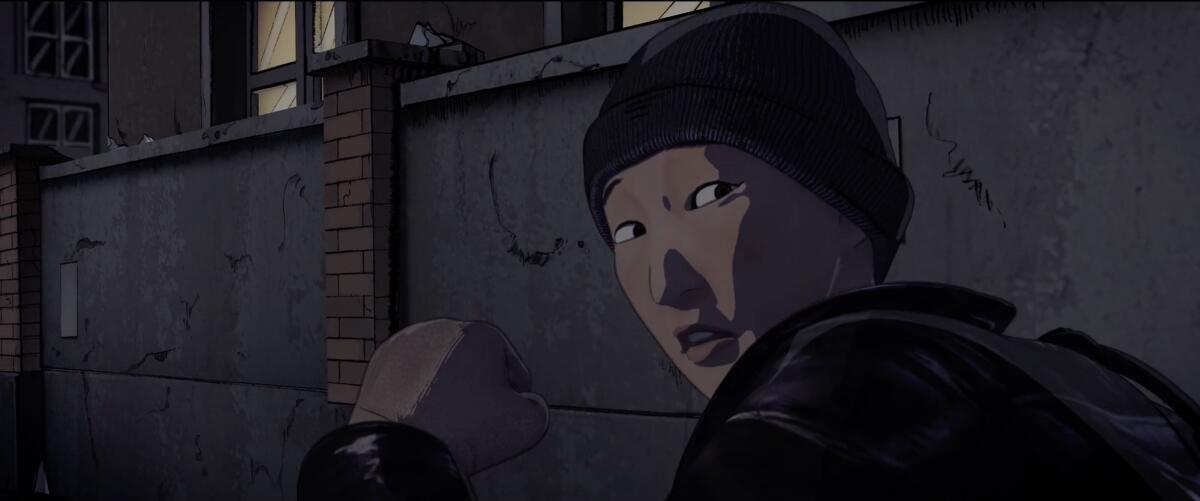Review: Bold 2002 takeover of Chinese state TV plays out in hybrid documentary ‘Eternal Spring’

As most recently proven by the Oscar-nominated Danish picture “Flee,” animation can serve as a vivid portal into events for which no visual record exists other than the memory of those who experienced them. That formal choice resurfaces in the hybrid feature, “Eternal Spring,” about the Falun Gong religion whose adepts have been violently persecuted since the Chinese government banned the spiritual practice in 1999.
In close collaboration with Daxiong, a renowned comic book artist based in Toronto and a follower of this belief system who fled China fearing for his life, Canadian filmmaker Jason Loftus intertwines heartfelt talking-head conversations with sumptuous animated sequences to chronicle the group’s hijacking of the state’s television signal in a northeastern Chinese city on March 5, 2002. The bold and risky campaign unleashed further retaliatory brutality on its members.
For your safety
The Times is committed to reviewing theatrical film releases during the COVID-19 pandemic. Because moviegoing carries risks during this time, we remind readers to follow health and safety guidelines as outlined by the CDC and local health officials.
Although the documentary, Canada’s Oscar entry this year for international feature film, employs 3-DCG animation technique, the attention to the line work, shading and textures in both the human characters and the environments bring the animated segments stylistically closer to Daxiong’s comic book art than hyperrealism. Not unlike the supernatural powerful figures Daxiong draws elsewhere, the men and women merit heroic depiction, particularly their resilient leader, Liang Zhenxing.
In order to piece together the timeline, Daxiong visits Seoul and New York City to meet with survivors in exile who closely participated in staging the takeover of the airwaves to briefly combat the communist regime’s propaganda about Falun Gong’s teachings. The plan entailed broadcasting a video explaining their peaceful nature. During those encounters, Daxiong sketches their memories, inevitably summoning strong emotions.
The most inspired among the many animated passages into the past is one that materializes Daxiong’s childhood memories of winter in his hometown of Changchun City, where Falun Gong originated and the epicenter of the repression. For a moment, he invites us to witness a period before the horrors of torture and incarceration tainted his memories of his home. Loftus’ foresight to include the behind-the-scenes process as part of the story — we see Daxiong working with the animation team and engaging in casual chats with the other subjects — also reinforces the direct link between creator and creation.
Even with animation as a limitless tool at its disposal, “Eternal Spring” mostly follows a conventional narrative arc concentrated on retelling what happened and how, except for a handful of whimsical flourishes. Loftus, nonetheless, keeps a measured perspective by not zeroing in on Falun Gong’s worldview and turning the piece into an ideological endorsement. Instead, he delves into the unchecked magnitude of China’s oppressive tactics against any group perceived as a threat to their sanctioned indoctrination.
Distinctively incisive on an emotional level, the film applauds the bravery of its participants to relive a painful shared trauma and create a permanent testament of what they endured.
‘Eternal Spring’
In Mandarin with English subtitles
Not Rated
Running time: 1 hour, 26 minutes
Playing: Starts Oct. 21 at AMC Theaters
More to Read
Only good movies
Get the Indie Focus newsletter, Mark Olsen's weekly guide to the world of cinema.
You may occasionally receive promotional content from the Los Angeles Times.










